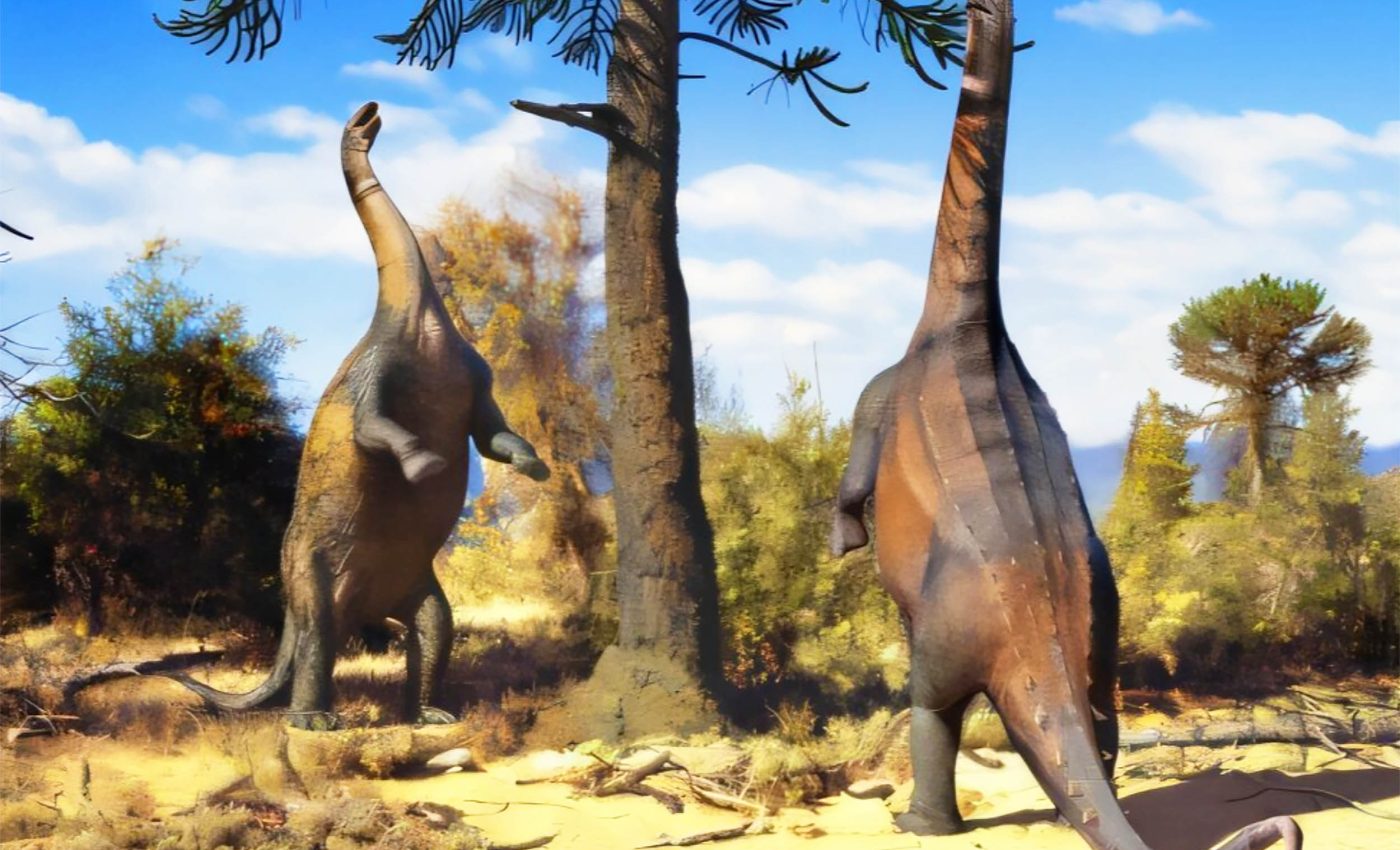
Some giant dinosaurs in South America could stand on two legs
Sixty-six million years ago, some dinosaurs may have had a trick up their sleeves – or rather, up their legs.
According to a new study, a pair of long-necked, four-legged dinosaurs that once roamed South America could do something most of their giant relatives couldn’t. They could stand tall on their hind legs for extended periods.
This ability gave them a serious advantage. It helped them reach leaves on tall trees that others couldn’t reach and possibly even scared off predators.
These were not the towering, building-sized sauropods we often picture but smaller relatives within the same family.
The Brazilian Uberabatitan and the Argentine Neuquensaurus were about the size of an elephant. That may sound large, but in the sauropod world, that’s modest. Some of their distant cousins were so heavy that even moving their tails took effort.
Special balance helped dinosaurs stand
The study focused on how young and small sauropods managed to rear up and hold that position. The research was conducted by a team from Brazil, Germany, and Argentina, with support from São Paulo Research Foundation (FAPESP).
“Smaller sauropods like these had a bone and muscle structure that allowed them to stand more easily and for longer on their two hind legs,” said Julian Silva Júnior, a postdoctoral researcher at São Paulo State University in Brazil.
“Larger ones were probably also able to stand, but for a shorter time and with less comfort, since the position caused a lot of stress on the femur.”
The researchers used computer models to simulate how these enormous animals handled the forces of gravity and muscle tension.
They ran their analysis on seven different sauropod species, each with unique body shapes and sizes. Fossils from natural history museums around the world served as the foundation for the reconstructions.
Testing dinosaur bones under pressure
To test how these ancient bones worked under pressure, the scientists turned to a method called finite element analysis, or FEA.
It’s a technique engineers use today when designing things like bridges, airplanes, and buildings. FEA predicts how a structure responds to different types of force.
“Using this technique, we performed two simulations,” said Silva Júnior. “One dealt with the extrinsic scenario, simulating the force coming from outside to inside.”
“In this case, gravity and the animal’s own weight on the femur when the dinosaur was standing on its hind legs. In the other, we analyzed the intrinsic scenario, the force that the muscles would exert on the femur.”
By combining both simulations, the team could estimate how much stress each dinosaur’s bones experienced while standing upright.
The results revealed that two South American dinosaurs – a juvenile Uberabatitan ribeiroi from Brazil and Neuquensaurus australis from Argentina – had femurs that handled stress remarkably well.
South American dinosaurs stand out
Both species lived during the Late Cretaceous period, around 66 million years ago.
“They had more robust femurs and could dissipate stress better,” said Silva Júnior. “The bigger ones had very large muscles and even giant femurs, but not enough to support their weight.”
“That doesn’t mean they couldn’t stand up, but they probably chose the best time to do so, because it must have been an uncomfortable position.”
Young Uberabatitans likely spent more time standing upright than adults, which would have struggled under their enormous weight.
For juveniles, however, this posture had clear benefits. It allowed them to reach leaves high above, a big advantage for plant eaters competing for food.
Standing tall for more than food
But eating wasn’t the only reason to stand up. This posture could have served several purposes. It may have helped males during mating, either by mounting females or by making themselves look more impressive to potential mates.
It also could have worked as a defense tactic – rearing up to appear larger and more threatening when predators came too close.
Though the findings are insightful, the researchers note a few caveats. Their computer models didn’t include cartilage, which is softer tissue that could absorb some of the stress on the bones.
Furthermore, the experts did not factor in the tail, which likely acted as a counterbalance when the dinosaurs stood upright.
Even with these limitations, the study gives scientists a better look at how these prehistoric animals behaved.
“The tool we use is very efficient for comparisons, even if the answer isn’t exact for each one,” said Silva Júnior. “By comparing representatives from different lineages, we can get a fairly accurate picture of how these animals behaved millions of years ago.”
The full study was published in the journal Palaeontology.
Featured image: Two Neuquensaurus stand on their hind legs to reach the top of a tree. Computational analyses indicate that the species could easily remain in this position 66 million years ago. Credit: Guilherme Gehr
—–
Like what you read? Subscribe to our newsletter for engaging articles, exclusive content, and the latest updates.
Check us out on EarthSnap, a free app brought to you by Eric Ralls and Earth.com.
—–













